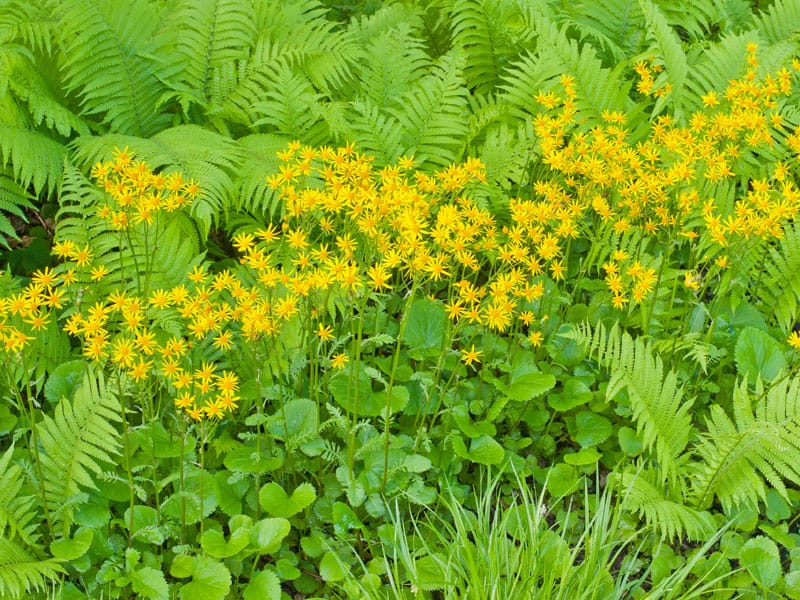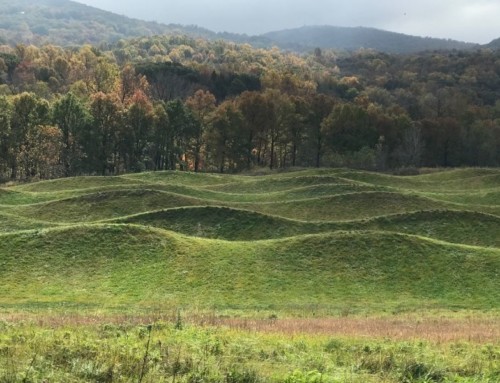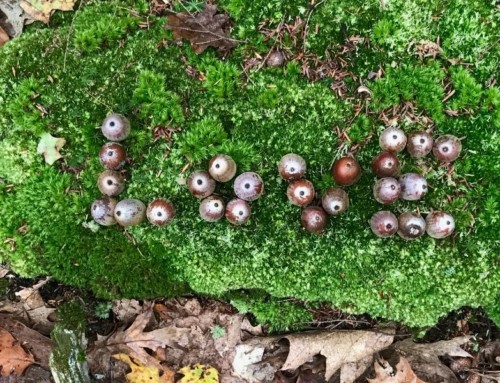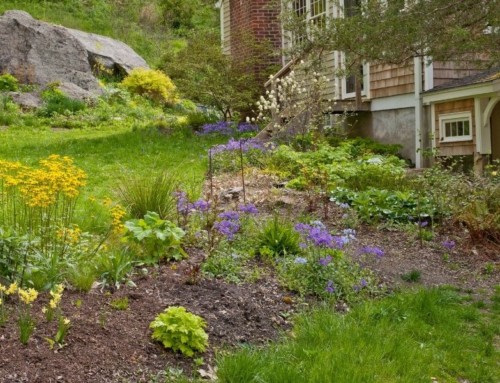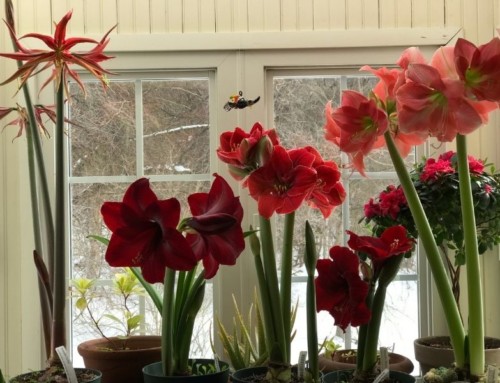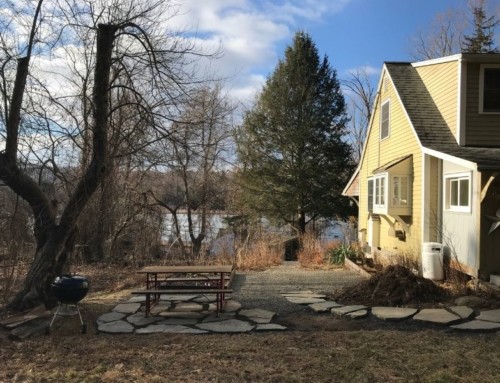In my early days of carving gardens out of the mountainside tangle, I tried everything new and everything native. Whatever I could get my hands on went willy-nilly into beds that kept expanding up a slope fit for mountain goats.
I was young, energetic and totally, unrealistically, foolishly, ridiculously optimistic.
A wise gardener told me years later that she’d never seen a less promising site for a garden, but didn’t want to discourage me by saying so.
While I was getting a whole lot of hands-on experience wrestling out rocks, poison ivy, invasive shrubs and vines, I began doubting the wisdom of traditional garden books lining my shelves.
NO MORE DIGGING
Sidelined way too often by pulled muscles, it finally dawned on me that double-digging and hauling compost and mulch up the mountainside was just plain crazy.
No matter what the experts (who undoubtedly could afford retaining walls or had nice flat terrain) said, there had to be a better way to prepare for planting.
Smothering existing weeds and tenacious pasture grasses with thick layers of straw proved much easier.
Time and microbial decomposition worked their magic without straining my back. Minimizing soil disturbance reduced erosion and kept buried weed seeds from seeing the light of day.
I wasn’t aware back then that my new lazy but smart garden bed preparation method was also sequestering carbon. Leaving carbon undisturbed in the soil prevents its release into the atmosphere as carbon dioxide, a climate altering greenhouse gas.
My already rich soil didn’t need compost or fertilizer and wouldn’t need mulch either if I could cover the ground with plants.
Why not choose plants suited to the conditions I had rather than trying to improve soil to some mythical ideal standard?
PLANTS FOR EVERY PLACE
I could see that plants grew over, around and between rocks in natural areas. Why not poke around to find soil pockets big enough for deep-rooted plants and quit pulling out stones?
Shallow-rooted and mat-forming plants, those that spread by sprouting from stems running underground (rhizomes) or trailing above (stolons) could colonize inclines and rocky places with minimal digging on my part.
Self-sowing plants could fill in the gaps. Roots and reproduction strategy became as important as pretty flowers and interesting foliage.
Meanwhile, I was zipping around photographing gardens for my first two books, Backyard Design and A Country Garden for Your Backyard and discovering lots of irresistible plants. Generous gardeners sent me home with all sorts of treasures.
I figured that anything able to survive a traveling photographer’s haphazard care was a keeper.
Some plants survived all too well. I planted Bishop’s weed (Aegopodium podagraria ‘Variegata’), a classic groundcover in those garden books.
It was an early education in the difference between garden thugs (over-enthusiastic) and invasive plants (non-natives that escape the garden and harm ecosystems by displacing native plant communities).
Wonderful native perennials like black cohosh (Actaea racemosa, formerly Cimicifuga racemosa) enthusiastically ran right over smaller treasures, so I started ripping it out.
Twenty years later I was still at it. They were just right for the spot and they just wouldn’t quit.
PICK A FAIR FIGHT
I had it all backwards.
Some plants might look beautiful together and be perfectly suited to a particular niche, but if their relative competitiveness is mismatched, one of them won’t last long without constant intervention.
I expect plants to be beautiful, support wildlife and solve problems – not cause them.
So I surrendered! Instead of pulling out rambunctious colonizing plants, I’m putting them back in and rescuing the few less competitive survivors.
Rescued little treasures now peacefully mingle in intimate gardens around the house where I can enjoy them – and primping is a pleasure.
Communities of more competitive (mostly native) plants are beginning to fill in areas too big to weed or too steep to tend. As ecological landscape designer Larry Weaner has often said, “You can’t treat the whole landscape like a garden.”
So it’s welcome back Physostegia virginiana, welcome back mayapples and mountain mint. You hold my slope, feed birds, bees and butterflies – and make my heart sing!
And welcome golden groundsel (Packera aurea, formerly Senecio aureus), aka ragwort (“wort” means plant, not warts), pictured above. It has become one of my most useful ground-covering problem-solving plants.
At first I wasn’t sure about letting such a brassy bright hue barge into my one subtle season, but I took the leap and love it.
Golden groundsel is a native woodland perennial plant that
- Grows in full sun to full shade (needs more moisture in full sun)
- Thrives in wet soil or dryish (denser in damp soil, thins out where dry)
- Remains semi-evergreen
- Suppresses weeds big-time
- Has a long season of bloom, with numerous 1” daisy-like flowers on 1-3’ stalks
- Covers the ground with roughly heart-shaped basal foliage that remains low
- Feeds pollinators and butterfly larvae
- Doesn’t appeal to deer
- Makes a good cut flower
- Spreads robustly by offshoots and self-sowing
- Is reported to out-compete garlic mustard and Japanese stilt grass
- Holds the slope, preventing erosion
- What more could you ask for???
Give it room and taller, deeper-rooted or equally competitive companions, and it’s a workhorse.
Use Packera aurea to replace lawn where your mower bogs down, to switch from purchased mulch to living “green mulch,” as the ground layer under tree and shrub plantings or in wild woodlands where it can duke it out with invasive plants.
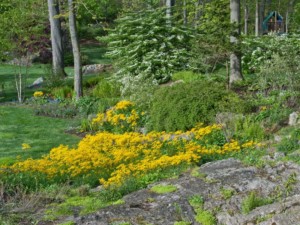
Garden designer Ana Hajduk replaced soggy lawn with a bed of Packera aurea
